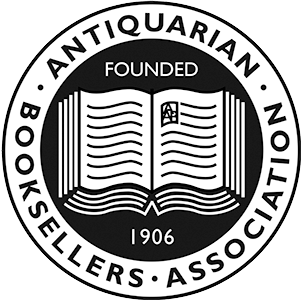London: Thomas Berthelet,, 1535. Trevisa's translation of "one of the most widely read scientific works of the Middle Ages" (Garrison-Morton) Second edition in English, the earliest obtainable, of the first printed English encyclopaedia, an important translation here revised and corrected "textually closer to the original" (Schäfer) - "one of the most widely read scientific works of the Middle Ages" (Garrison-Morton 91). Bartholomaeus, who may have studied at Oxford when Robert Grosseteste was master of the schools, studied in Paris and wrote his encyclopaedia in about 1245 while serving as lector of the newly formed Franciscan province of Saxonia. His scientific grasp is not as strong as his putative Oxford master, but he is one of the earliest to cite Avicenna extensively. Alongside lengthy expositions on astronomy and natural history, his two most important contributions are in the fields of geography and medicine. At a time when medical knowledge was not readily available in English, Bartholomaeus's synopsis of both medical theory and specific remedies was one of the most learned published sources in that language, treating specific infirmities in some 70 chapters and covering psychology, sensation, physiology, and, innovatively, depression. Book XV, entitled De regionibus, is an early geographical dictionary informed by modern and perhaps even first-hand experience. He describes Paris at length, and even Constantinople, China, and Arabia have significant entries. Overall, his account "is of considerable value for the political geography of Europe in the thirteenth century, both as a general survey showing what regions he deemed important enough to mention and what he thought might be omitted" (Thorndike, p. 425). Bartholomaeus Anglicus's encyclopaedia plays a repeated role in the history of the English book. Trevisa's translation, completed by February 1399, marked the watershed when English, rather than French, became the preferred language for the reading of the educated classes. Alongside Chaucer and the Wycliffe Bible, it is the third most frequently cited source in the Oxford English Dictionary for the first occurrence of a word (cf. Peeters, 2012). When William Caxton went to Cologne to learn to print in about 1471, one of the first books he cut his teeth on was a Latin edition of it, and his successor Wynkyn de Worde's 1495 first edition is the first book printed on English paper. The first edition is now unobtainable, preserved in only four complete copies, all in the US, with no copy at auction since 1938 (and that lacking five leaves). "Lexicographically, the [second] edition is an advance over the editio princeps, which had only a systematic table of Latin chapter headings to guide the reader, misplaced between books 1 and 2. This list has now been put in its proper place at the beginning, translated into English, and, most important, re-arranged alphabetically" (Schäfer, XII). Provenance: bound by James Hayday, active in London 1833-61; "E. Hy", purple ink stamp on flyleaf; Major William Herbert Mullens (1866-1946), armorial bookplate on pastedown; Charles Bigham, second Viscount Mersey (1872-1956), ex-libris on pastedown; pencilled collation and condition report of E. M. Dring for Bernard Quaritch on rear free endpaper. Folio (260 x 188 mm). Woodcut device on verso of last leaf and woodcut initials throughout. Mid-19th-century red morocco by James Hayday, spine with five double bands, double gilt rules either side, gilt-lettered in three compartments, others with gilt tool with stylised coronet and flower-heads, turn-ins with double gilt rules, marbled endpapers, gilt edges. Light rubbing, 11 leaves re-margined at front and rear of volume including title page, a few letters of headline of second leaf recto partly supplied in pen facsimile, brown staining affecting approx. 30 leaves, a few minor wormholes, nevertheless a very good copy. ESTC S106992; Garrison--Morton 91 & 92 (first English edition); cf. also Heinz Meyer, Die Enzyklopädie des Bartholomäus Anglicus, 2000; A. S. G. Edwards, "Bartholomaeus Anglicus' De Proprietatibus Rerum and Medieval English Literature" in Archiv für das Studium der neueren Sprachen und Literaturen 222, 1985; Jürgen Schäfer, "Introduction" in Batman uppon Bartholome: his book De proprietatibus rerum, 1976; T. M. E. Peeters, "From Chaucer to Trevisa: Exploring Language Using The Oxford English Dictionary" (thesis, Utrecht University, 2012); and Brent A. Pitts, Le Livre des Regions, 2006.
















